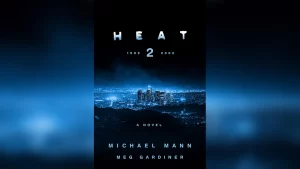If you had asked a handful of video editing professionals for their opinion on whether Premiere Pro or DaVinci Resolve was the best tool for their work just a decade earlier, you would probably have received some funny looks. See, these two giants of the video production world once occupied very different niches – Resolve was originally renowned primarily for its advanced colour correction and grading capabilities, but today it has evolved into a full-on non-linear editing platform. I suspect that this development has worried Adobe somewhat, as their Premiere Pro package has long been the industry standard for professionals within this industry.
Today, more people are getting started in video editing work than ever before, which makes choosing the right software for the task a daunting one. Both platforms offer similarly wide ranges of tools, and in many ways, near-identical functionality. That being the case, how do you choose between them? Making an informed decision here will require you to explore the strengths and weaknesses of both platforms to help you determine which offers the most relevant toolkit for your style of work – no easy task, given that both pieces of software have a notoriously high learning curve.
Overview: Adobe Premiere Pro
As one of the first-ever non-linear video editing systems, Premiere Pro was initially only available on MacOS, as Apple’s computers were regarded as the only choice for serious creative work at the time. And for good reason – Logic Pro, QuarkXPress, Final Cut, the number of world-class creative tools available on that system were impossible for Microsoft and their Windows platform to compete with. The situation only increased in intensity with the switch to Adobe Creative Suite and the tight integration between Adobe Premiere, Audition, and Photoshop.
For years, Premiere was the goto-to choice for creating commercials, films, television shows, and online videos. Those with deeper pockets will probably shell out for the full Adobe Creative Suite, but you can purchase Premiere on its own if you are just getting started, need to save a little money, yet don’t want to sacrifice the quality of your software.
Overview: DaVinci Resolve
Originally published in 2004 by DaVinci Systems, the company was purchased in 2009 by Blackmagic Design, acquiring the rights to Resolve in the process. In the years since BlackMagic has worked diligently to transform its acquisition into much more than the sum of its parts – it’s no longer just a colour grading tool, it’s a fully-featured video editing suite that offers plugin support and even hardware support for BlackMagic’s wide range of film-quality digital cameras.s
Better still, BlackMagic offers Resolve in a free-to-use version – a common tactic when a newcomer is trying to unseat something as dominant as Adobe Premiere. It’s a relatively limited version, of course, but there’s no annoying watermark ruining your videos – you just lose a fair few of the package’s most in-depth features. If you need the ‘full fat’ DaVinci Resolve experience, you’ll need to shell out on the company’s professional SKU: DaVinci Resolve Studio.
The Showdown: Which Should You Choose?
All professional software tends to have a pretty steep learning curve – the high-end capabilities of these software packages necessitate users to devote significant time towards mastering them. Premiere Pro is widely regarded as the easiest to learn, at least on a beginner’s level, but there probably isn’t a great deal of difference when it comes to getting to know either package inside out. If you have experience with other Adobe packages such as Photoshop then you’ll probably feel right at home in Premiere, which is a definite advantage.
Resolve has a very different style of workflow which is centred around five distinct modules, each with its own specific capabilities. There’s a cut and edit window which does exactly what it says on the tin, whilst the Fusion tool is used for animation and Fairligjht is tailored towards audio editing. The delivery window is where you’ll be exporting to several industry-standard formats.
Audio
Both packages have roughly analogous audio-editing functionality as standard, but if you’ve shelled out for the full Adobe Creative Cloud then you’ll have the advantage of Adobe’s Audition suite which is every bit as capable as other high-end audio editors such as Magix Sound Forge or Steinberg Wavelab.
Colour Grading
This is the area where DVR really shines – Premiere lacks many of the advanced colour grading tools that are built right into DaVinci, If your work requires a great deal of colour grading, Resolve may well be your best choice – even the most devoted Premiere users will occasionally switch out to Resolve to complete this area of their work.
Pricing
The pricing structures for each package could not be more different –Adobe switched to a subscription-based model a long time ago, and now charges $20.99 per month for Premiere on its own, or $29.99 for the full creative cloud. That structure is obviously intended to push people towards paying for the full suite, but ten dollars is still ten dollars – if you don’t need the extra functionality, stick with Premiere only.
DaVinci Resolve, on the other hand, comes in two versions – the free version is incredibly capable, making it an ideal choice for those who are just starting out. This is also an excellent way of acquiring new customers – if you’ve already grown accustomed to using DVR, the chances are you are going to purchase the full Studio version for $295 rather than switching to Premiere at a later date. It’s also worth pointing out that just one year’s licence of Creative Cloud exceeds the total purchase price of DaVinci Resolve Studio.
The post Software Showdown: Premiere Pro vs DaVinci Resolve first appeared on Skewed ‘n Reviewed.


